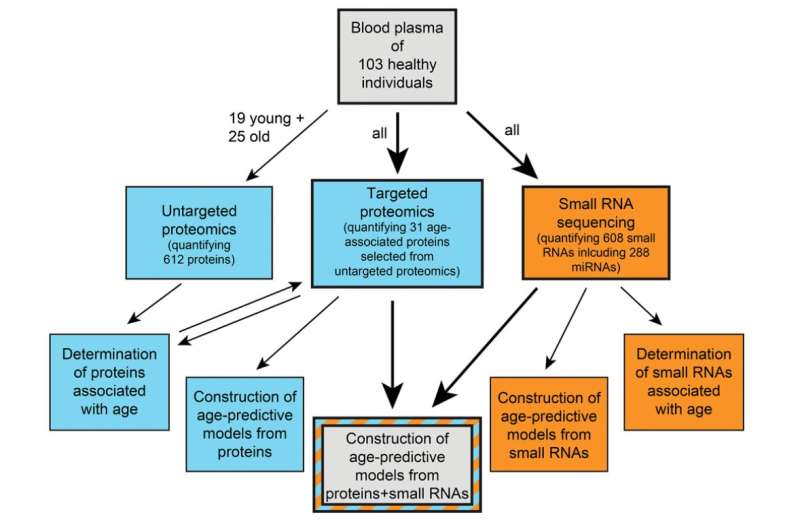This article has been reviewed according to Science X's editorial process and policies. Editors have highlighted the following attributes while ensuring the content's credibility:
fact-checked
proofread
Age prediction from human blood plasma using proteomic and small RNA data: A comparative analysis

A new research paper titled "Age prediction from human blood plasma using proteomic and small RNA data: a comparative analysis" has been published in Aging.
Aging clocks, built from comprehensive molecular data, have emerged as promising tools in medicine, forensics, and ecological research. However, few studies have compared the suitability of different molecular data types to predict age in the same cohort and whether combining them would improve predictions. In this new study, researchers Jérôme Salignon, Omid R. Faridani, Tasso Miliotis, Georges E. Janssens, Ping Chen, Bader Zarrouki, Rickard Sandberg, Pia Davidsson, and Christian G. Riedel from Karolinska Institutet, University of New South Wales, Garvan Institute of Medical Research, and AstraZeneca have explored this at the level of proteins and small RNAs in 103 human blood plasma samples.
"Here we expand the limited portfolio of comparisons between aging clocks built from different types of molecular data from the same cohort," the research team writes.
First, the researchers used a two-step mass spectrometry approach measuring 612 proteins to select and quantify 21 proteins that changed in abundance with age. Notably, proteins increasing with age were enriched for components of the complement system. Next, they used small RNA sequencing to select and quantify a set of 315 small RNAs that changed in abundance with age. Most of these were microRNAs (miRNAs), downregulated with age, and predicted to target genes related to growth, cancer, and senescence. Finally, the team used the collected data to build age-predictive models.
Among the different types of molecules, proteins yielded the most accurate model (R² = 0.59 ± 0.02), followed by miRNAs as the best-performing class of small RNAs (R² = 0.54 ± 0.02). Interestingly, the use of protein and miRNA data together improved predictions (R² = 0.70 ± 0.01). Future work using larger sample sizes and a validation dataset will be necessary to confirm these results.
The researchers summarize, "Nevertheless, our study suggests that combining proteomic and miRNA data yields superior age predictions, possibly by capturing a broader range of age-related physiological changes. It will be interesting to determine if combining different molecular data types works as a general strategy to improve future aging clocks."
More information: Jérôme Salignon et al, Age prediction from human blood plasma using proteomic and small RNA data: a comparative analysis, Aging (2023). DOI: 10.18632/aging.204787




















